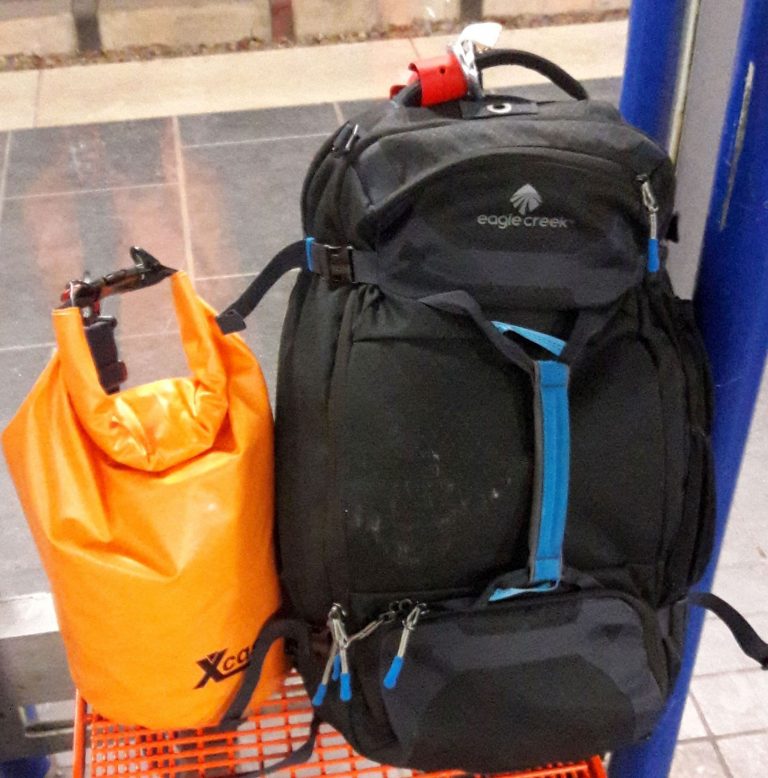The Philippines N°2
As mentioned in the previous post, I went to the philippines again!
This time, I took some friends who also dive and flew to manila. From there, we went to coron, oslob and moalboal to spend a few days island hopping and diving – but see for yourself!
I (finally) bought a GoPro Hero 5 black and took this, instead of the chinese actioncam (e.g. during my Corfu-Trip) or the canon Powershot D20 (Komodo) – but honestly, I’m really disappointed with the photo-quality. Some of the distortion might be due to less clear water or higher currents but for taking pictures, the GoPro Hero 5 is definetly not good enough – above and below the surface. (And way less good than Ads or influencers make you believe; I’m not even sure it would win in a standoff to a 50€ china actioncam. This counts for PHOTOS – the GoPro Series-Camneras were designed for videos anyway.)
Beijing
In march 2018, I went to the Philippines – again! After visiting these beautiful islands the first time, there were even more places I wanted to visit. So I found a cheap flight which had the additional benefit of 2 stopovers in Beijing, China. Upon our first arrival, we queued at different queues since nobody could tell us where to go. Eventually we saw a well hidden sign pointing us at the right counter for the transit visa and waited ~1.5 hours until the 10 people in front of us were finished (pretty slow :D). After enduring some questioning regarding the purpose of our visit and our intentions for the 15 hour stopover (you really want to go to the city centre for just 10 hours?) we finally got our visa-stamps. We went to the city centre, had a look at Tianmen square, went through a ridiculous amount of consecutive ID-checks (on the same, fenced, pedestrian walk), went to the entrance of the forbidden city and tried to turn around again and ate the original beijing duck =).
On our way back, we had another stopover and decided to go to THE GREAT WALL. Luckily, we met 2 other backpackers who wanted to join and easily found a cab driver to get us to the wall. Equipped with chinese cash and Starbucks coffes, we got in the car for the 1.5 hour ride and ended up buying cable-car and sledging tickets to get up to the wall and downhill fast. This allowed us to spend about 2 hours on the actual wall before heading back.
The L(/R)ight Backpack
tldr; if you want a light, durable handluggage backpack, try the eagle creek load hauler extendable (not for hiking long distances!)
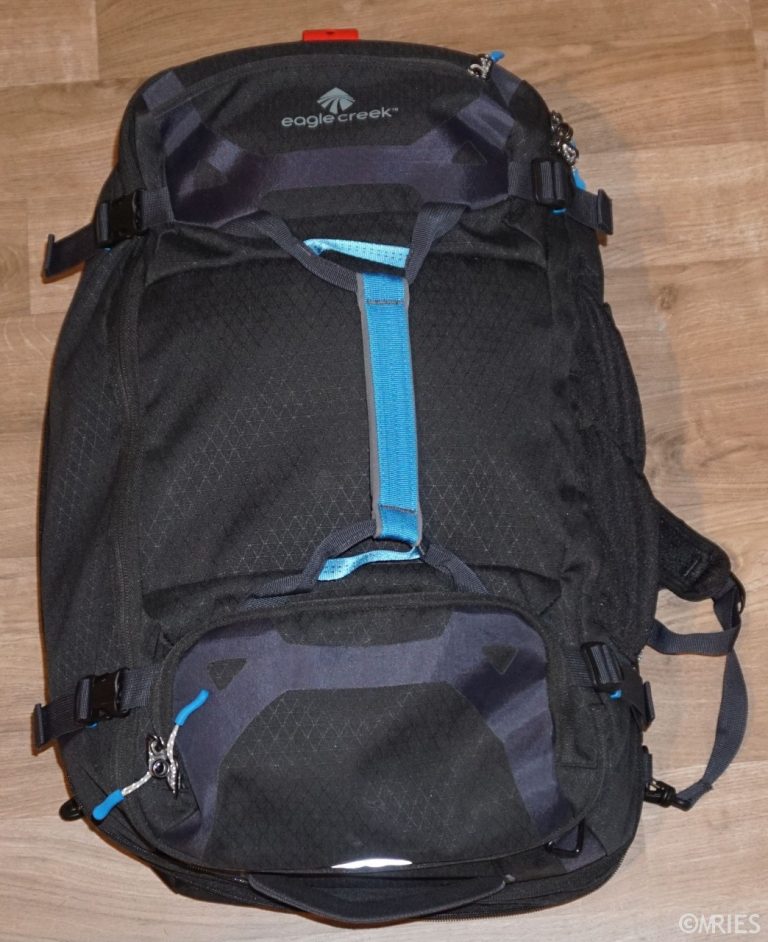 |
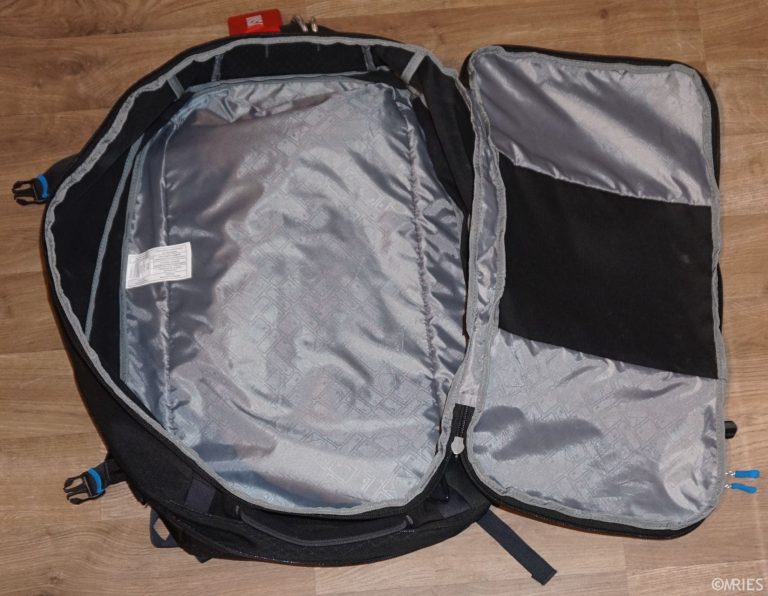 |
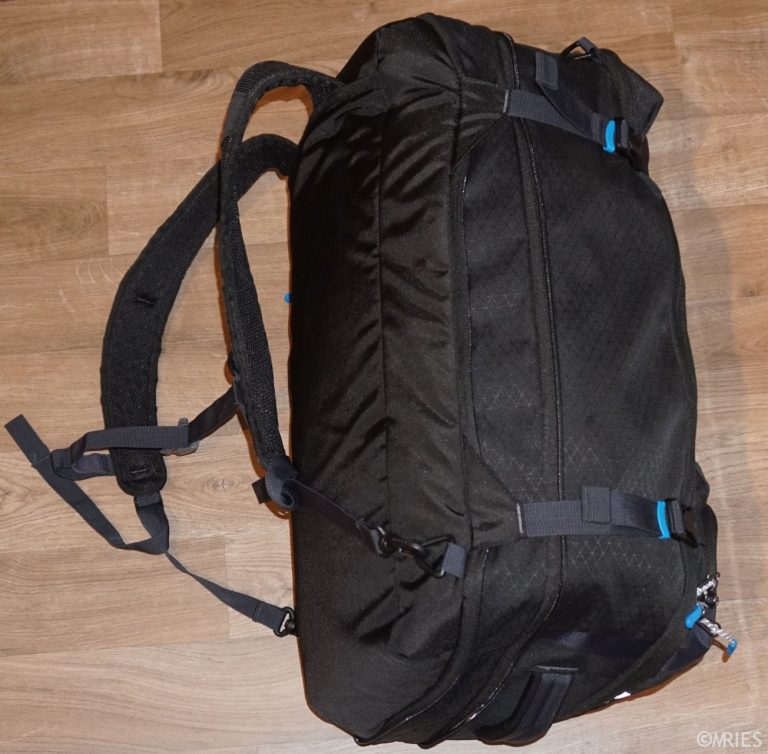 |
 Some years ago, I decided to travel handluggage only as much as possible. The last time, I’ve packed a ‘real’ bag was for my south-america trip in 2015 which involved multiple climate zones and hiking the inka trail. Usually, a cabin-sized backpack works great for weekend trips and offers enough space for ~1 week worth of clothes in a tropical climate. Since washing is extremely affordable in asia & southern america and availible almost everywhere, this is sufficient for multi-week trips as well. The remaining problem is the weight – some airlines restrict hand luggage to 7kg. A bag with less than 7Kg is hard to achieve when taking gadgets like a system-camera, a 2nd lens, a powerbank or an underwater camera with you, especially when the bag itself weighs in at 1.5Kg. Some years ago, I decided to travel handluggage only as much as possible. The last time, I’ve packed a ‘real’ bag was for my south-america trip in 2015 which involved multiple climate zones and hiking the inka trail. Usually, a cabin-sized backpack works great for weekend trips and offers enough space for ~1 week worth of clothes in a tropical climate. Since washing is extremely affordable in asia & southern america and availible almost everywhere, this is sufficient for multi-week trips as well. The remaining problem is the weight – some airlines restrict hand luggage to 7kg. A bag with less than 7Kg is hard to achieve when taking gadgets like a system-camera, a 2nd lens, a powerbank or an underwater camera with you, especially when the bag itself weighs in at 1.5Kg.
The loophole: Most airlines allow for a ‘personal item’ besides the cabin bag which is even less likely to be weighed than your hand luggage. Some don’t mention it on their website, but so far none complained. I use a 20L waterproof roll-top dry-bag as ‘personal item’. This will be the daypack which is perfect when near the water or on a boat to safeguard your electronics. During the flight, it holds heavy electronics/batteries and what you might need during the flight (earplugs, inflatable neck pillow, ebook-reader..). This picture shows the waterproof bag and my Kestrel packed for a 2.5 week thailand trip. Although my backpack has never been weighed, I decided to swap my Jack Wolfskin backpack for a lighter alternative. |
So here’s a small guide on cabin-sized backpacks:
Wishlist:
- Cabin sized
- extendable to accomodate the jeans and sweater necessary for flights when travelling on the ground.
- as light as possible
- durable
- flexible carrying options as backpack or duffle bag
- opens like a suitcase for easy access
Starting Point: Bags I used previously:
 |
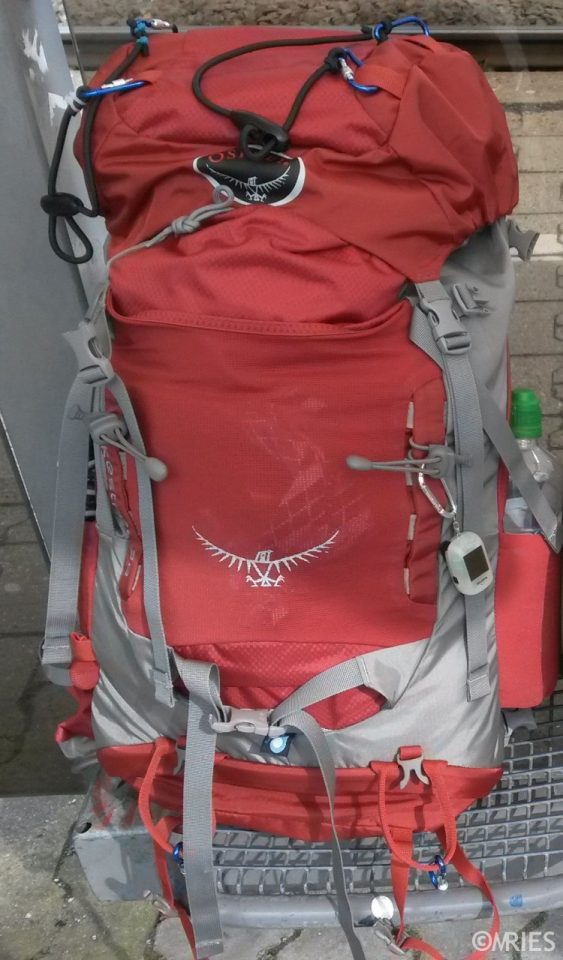 |
| Jack Wolfskin Getaway 40L (discontinued): + cabin sized + opens like a suitcase + laptop-sleeve included + multiple carrying Options – ~1.5Kg, with Laptop sleeve removed still 1.3kg |
Osprey kestrel 38 38L, 2014/15 Model. + cabin sized + great back ventilation + superior carrying system and weight distribution – only top-flap access (the new model also offers an additional zipper for the main compartment) – back-ventilation consumes space – ~1.4Kg |
Every travel-blogger tends to recommend the osprey farpoint 40 – which is a great backpack but weighs ~ 1.4Kg. Some tell you about ‘hybrid backpacks’ which have wheels like a trolly – they usually weigh around 2.5Kg or more. Since the desired bag will only be used to get from the airport, ferry or bus to the hostel/accomodation, and not for hiking, carrying time is limited.
To lower the weight, I was willing to make some compromises:
- padded compartment: I don’t always take a laptop and If I do, I can put it in a sleeve before packing -> drop the padded laptop compartment
- suspension system: when not hiking, the suspension system doesn’t need to be perfect. To walk 1-2km per day in Airports or from the ferry to the hotel, padded backpack-straps should suffice for 7Kg.
- hard PU/wire frame: light backpacks don’t maintain their rectangular shape when empty. That’s ok, as long compressions straps allow it to stay in shape when almost full.
I’ve searched the websites of most outdoor-equipment manufacturers, stores, amazon and local stores and realized, light backpacks are hard to find. There is the ‘Cabin Max’ series on amazon which is quite lightweight but some recommendations are devastating (ripped seams/fabric during 1st trip). Then there’s Minaal – a Kickstarter/indiegogo funded ‘perfect travel bag’ which is quite expensive (250$+) and some other premium 200$+ backpacks from e.g. Vaude but a low weight never seems to be the focus. Thanks to some american backpack store, I ended up on the eagle creek website. And they offered what I was looking for!
I bought the eagle creek load hauler extendable via Amazon.de (it didn’t show up initially due to incomplete data on the product page).
- + extremely light
- + durable despite fragile looking fabric
- – no bottle-compartment -> I’ll add this myself =)
I’ve used it for my latest trip to Thailand, Komodo and Malaysia and it was the most versatile backpack I’ve used so far. Durable, light, offered plenty of space and makes it easy to find whatever you want to get out. The only thing I missed was the bottle-holder (which my mother was able to add by using the sewing machine when I was home over christmas (I’ve never used the machine before and she was happy to help me 🙂 Thanks, mom! ) ) . Here it is just before its second big trip to beijing and the philippines, accompanied by my trusted drybag (personal item).
And a table with the facts on these 3 and additionally the smaller eagle creek expanse hauler and the famous farpoint 40.
| eagle creek Expanse Hauler |
eagle creek Load Hauler extendable |
Jack Wolfskin Getaway |
Osprey Kestrel 38 M/L |
Osprey Farpoint 40 M/L |
|
|---|---|---|---|---|---|
| price ~ | 109$ | 129$ | discontinued; was 100€ | 105€ | 100€ |
| Volume | 50 L | 49 L / 57 L | 32 L | 38 L | 40 L |
| Weight | 950 g | 830 g | 1430 g | 1420 g | 1320 g |
| Height [cm] | 56 | 56 | 55 | 71 (can be squeezed to 56) | 54 |
| Width [cm] | 35.5 | 36 | 36 | 38 | 35 |
| Thickness [cm] | 23 | 23.5 / 28 (extended) | 27 | 40 | 23 |
| Extendable? | – | + 5 cm main compartment | – | – | – |
| Opens like a suitcase | x | x | x | – | – |
| 2nd inner compartment | x | – | x | x boden | – |
| small compartments | 1 | 2 | 1 + organizer | 1 top + net | x |
| Padded compartment (Laptop/tablet) | – | – | x | – | x |
| Compression straps | x | x | x | x | x |
| Frame/stability | – | – | foam | PU-plate | foam |
| Backpack-mode | x | x | x | comfy (vented back + hipbelt) | comfy (vented back + hipbelt) |
| Duffle/Messenger-bag mode | x | x | x | – | x |
| Bottle-compartment | – | added ^^ | x | x | x |
A gamble for a whaleshark – Diving Koh Tao – again.
Having booked the komodo-flights just hours after coming back from the liveaboard, I was scrolling down my facebook-feed and noticed Phoenix Divers Koh Tao – whom I had visited the year before – had been posting whaleshark pictures for days in a row. Erik, my dive-buddy just said ‘can’t we go there?’ – And since we had 4 days before our flight to komodo, we started googling how to get to Koh Tao asap. Flights were expensive but we found a bus-ferry route and messaged the diveshop if they had beds in the dorm and spots on the boat. They did =). Delayed by a day due to the late kings funeral ceremony (may he rest in peace) and after leaving our krabi-hotel 3 days early, we were on our way to Koh Tao – anticipating to see those magnificent giant spotted whalesharks. A few hours of cab, bus and ferry rides we arrived in koh Tao in the evening and set up our gear. The next day we had 3 great dives – without whalesharks 🙁 . And the evening was overshadowed by backpackers and tourists deserting bars due an alcohol ban.
On the 2nd and last day of our ridiculously short trip over to Koh Tao we were on the boat again – enjoying coffee, the salty air and stunning view while making new friends among the other divers. Then we saw it: The captain lifted his hand sideways in front of his forehead – and people started getting enthusiastic while the diveguides tried to keep us calm since there’s absolutely no guarante these animals stick around. Luckily it did =)). When we reached chumpon pinnacle, we got ready and as soon as someone spotted the whaleshark jumped in.
It stayed with us for most of 2 dives, circelling in and out of sight and coming really close.
Finding the mantas – Diving Komodo
As mentioned previously; we didn’t get to see any manta rays during our liveaboard trip. But we met a few swiss people who told us about komodo… and once we were back on land and had wifi, we found (return) flights to komodo for ~160€. Glad that we hadn’t booked anything besides the liveaboard, we booked the flights and – after a short visit to Koh Tao (upcoming post) – flew over to flores to enjoy 2.5 days of diving followed by a visit in the national park to see the last living dragons.
Our boat was really comfortable with a sundeck complete with bean bags to enjoy the ~2h boat ride to the first dive site. Those were the first current-dives with hooking in for me and I saw sharks, mantas and lots of turtles. Komodo is definetly worth a visit but don’t go there just for the dragons.
Liveaboard Pawara – Diving west Thailand
In october 2017 I went on my first liveaboard heading for the famous richelieu rock. We decided to book the 5 day 4 nights trip from Khao Lak to the similand islands. This was the first and only prebooked part of a 2 week dive-trip to SEA. After flying into phuket in the evening, we spent the evening and the better part of the next day chilling by the pool or visiting restaurants nearby. We were picked up the next day around 5 pm and driven to Khao Lak where we boarded our home for the next 4 nights; the MV Pawara. Besides the crew of ~14 (boat boys, engineer, awesome cook and other helping hands, the captain, and our dive masters/guides) it offers cabins for up to 26 people, a huge dining area, a livingroom and a sundeck. Luckily, the season had just started and it was only half booked so we had lots of space. The following 4 days can be described in just 4 words:
DIVE EAT SLEEP REPEAT
We got up, had coffee, went for a dive and were welcomed with breakfast. After some deco time on the sundeck, in the shade or inside on one of the many sofas we went diving again – you get the schedule :-P. Besides me and my Buddy, there were americans, swiss, and even a professional underwater videographer (Alex del Olmo aka Naucrates ductor) who joined in for the dives. Long story short: We went diving in Koh Tachai, Koh Bon, the similan islands, Richelieu Rock and even the Boonsung wreck. We saw amazing sealife and had a lot of fun. The only downside was that we didn’t encounter any mantas or whalesharks.
Food was amazing; the divesites were diverse and offered plenty of new sights and Beto and the diveguides (especially Kewalyne and Liane) as well as the other guests made this an unforgettably awesome first liveaboard experience for me.
Traveling – Tips
So far I’ve mainly posted pictures from places I’ve been to since 2014. Before that, I traveled mainly around Europe but since I was in Singapore in 2014, I started exploring the rest of the world.
Here, I’d like to give some advice on traveling – in general, in Europe and around the world. – breaking with the tradition of posting mainly photos.
Cities in Europe:
Europe offers many diverse and beautiful cities, most of which have quite a history and offer an ancient area with beautiful old architecture, heritage sites (and sights) and ruins.
Unlike mega-cities such as Dubai oder Kuala Lumpur, most european capitals have been around and growing for hundreds of years. Some were founded by Romans, like most italian cities and e.g. Trier in Germany; my hometown. These cities look back at roughly 2000 years of history, devastating wars and fires, growth and change. You’ll find ruins and churches from different epochs and distinctive areas/blocks that were built in a certain periods and offer diverse styles. Most cities still preserve the old town and city-life revolves around the marketplace / piazza del popolo. Where (asian) mega-cities impress with their skyline at night, european cities amaze with their diverse buildings and offer a ‘window in time’.
Planning the trip:
- When flying, take note which Airport you’re flying into. Some are located quite far away and fast transfer to the city can be pricey, especially during night hours. Cabs in Europe aren’t as cheap as they come in Asia – using uber might save you some money but I’d advise to stick to public transport as much as possible.
- Try to find an accommodation near the center or with good public transport Connections (subway station within 500m)
- Book a hostel rather than a hotel to get to know others; explore the city together and get tips on what to see.
- When traveling by bus: there rarely are semi-cama (comfy reclining seats) or cama (wide comfy seats with curtains around) bus-options in Europe so don’t expect them to be too comfy.
European cities are best explored by foot and it’s always a good idea to try to get a bird’s-eye view from a hill, a TV-tower (or a rooftop bar=) ). For the first day, I can highly recommend the ‘free’ walking tours offered via ‘sandemanns new Europe tours’. These tours exist in many cities and usually start around 11 near the main square / city center. Unless you’re a huge group, booking isn’t required and you can just show up and look for the guides in red shirts. These guides are mainly history or art students (I’ve also met engineers and teachers) who love their cities, know a lot about it and got certified as a guide. Since their only payment is the tip at the end of the trip, they are enthusiastic and try to give you the best experience they can. Feel free to ask them whatever you’re interested in; there’s a high chance they can recommend a place to go to. The tours usually take around 3 hours and finish at a bar with a special offer. In some cities, they also organise pub crawls in the evening. – Please remember to tip the guides according to your liking so they can keep the service running and others get the same chance to enjoy these tours.
I’ve done this free walking tour in Amsterdam, Berlin, Dublin, Edinburgh, London, Madrid, Munich, Rome and Prague. There might be other companies or freelancers offering free Walking tours – which might be great as well or even better – just give them a try.
When in Germany; take note:
- not everybody understands English: (In my opinion, the all-dubbed-TV is the reason why especially the ‘older generation’ lacks English vocabulary unless they need it professionally).
- public transport; especially the ‘Deutsche Bahn’ is complicated and expensive. Ask a local if you’re uncertain what to book.
- Taxis are really expensive – stick to public Transport.
- Shops are closed on Sundays. Except for ~5 Sundays/year (differs year to year and citywise), all stores are closed on Sundays. Only restaurants and gas stations will be open.
- free WiFi is scarce!
- try typical German bread: it’s the best in the world.
(more country specific advice will follow)
Sicily – a short visit in Taormina
In september 2017 I joined my parents and my brother for a week in sicily. We stayed near Taormina; went to the aeolian islands to see the stromboli and I also went diving near Taormina.

